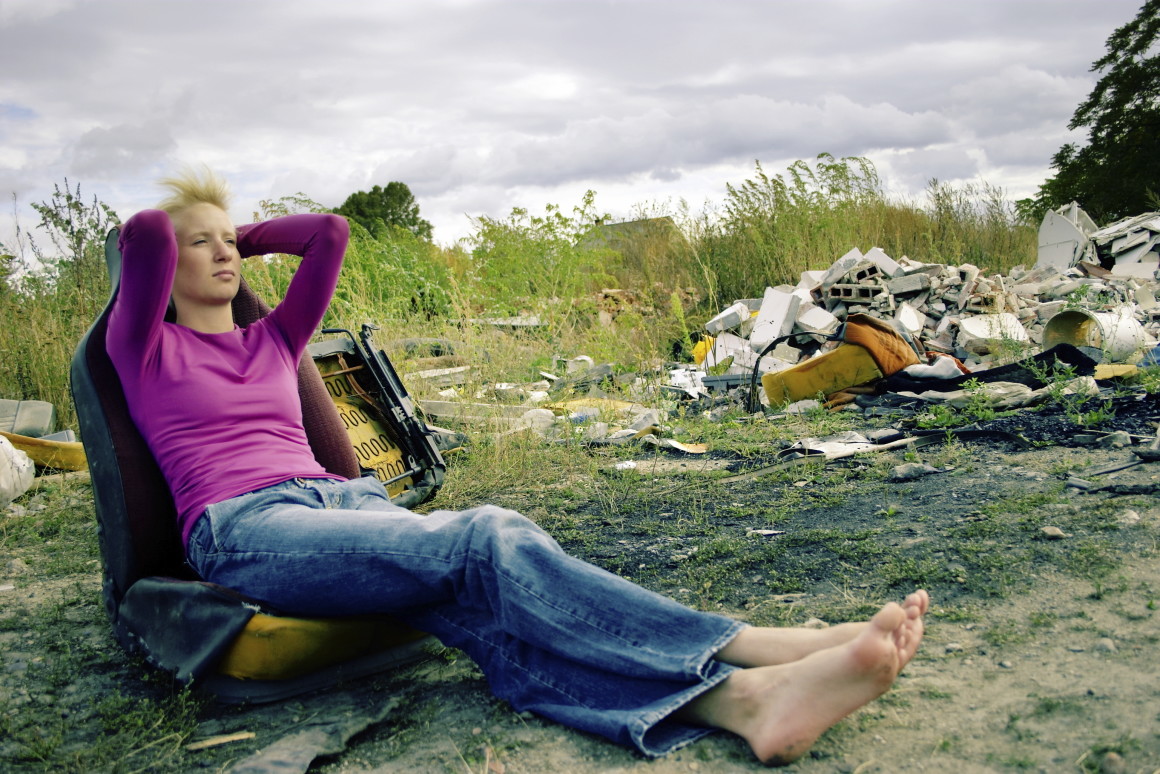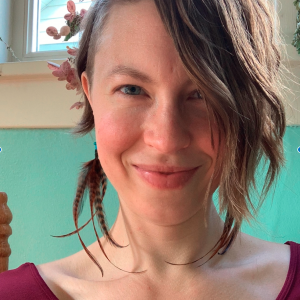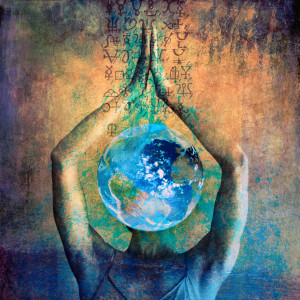On a 10-day retreat in India, I ended up literally facing my own garbage. It has changed me deeply. Here's how it happened and one practice I use to heal my relationship with the Earth.
***
To reach the small Himalayan river to perform our daily ritual, I crossed through the ornate metal gate and down seven steep rock stairs. I made my way to where the pebbles and stones lay black and white and the waters flowed gracefully through the ancient valley.
It was the middle of a 10-day women’s retreat with the Awakening Women Institute, and on this day, I prayed to receive availability—availability to what was happening inside myself and in the world, availability to what is. It was a simple but earnest prayer.
As soon as I completed the ritual, I turned slightly to face downriver. My eyes were immediately caught by something a few yards away in the shallow water. It seemed to be … rice. Yes, rice. Plastic bags and … ? I began to move closer, curiously.
Right there in the water were banana peels, the bottoms of green peppers, more plastic and … a broken lightbulb?!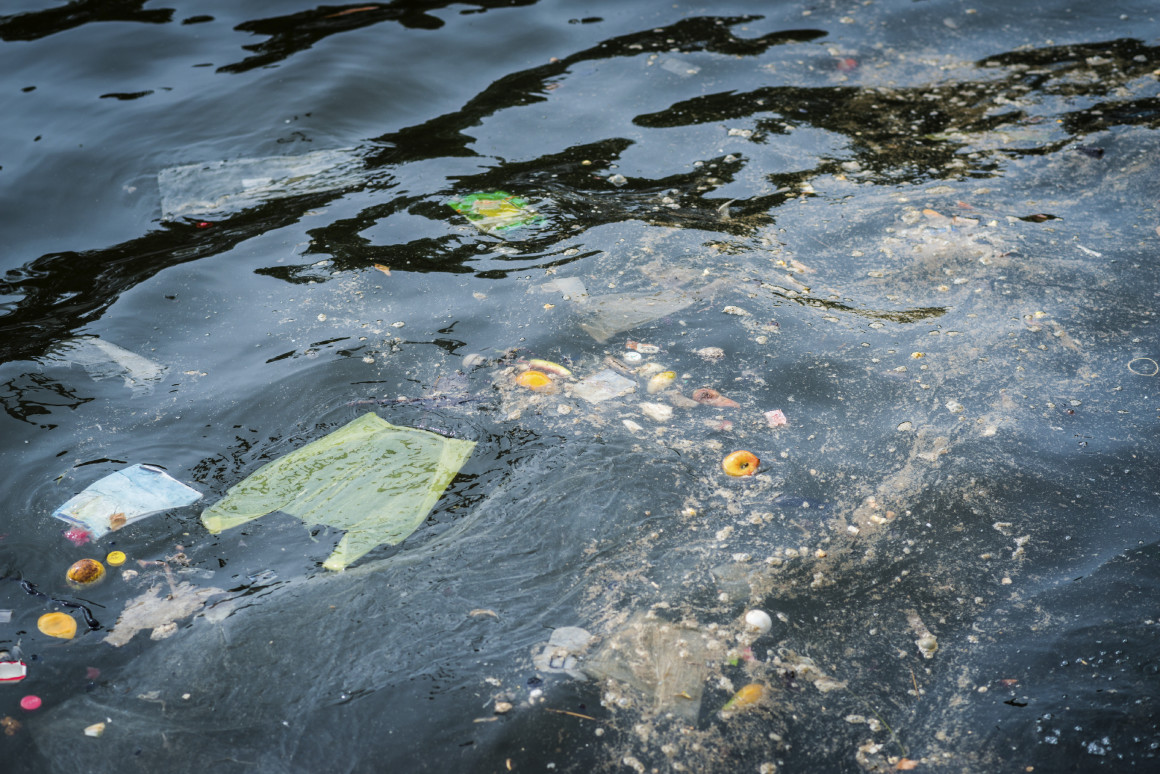
It dawned on me as I peered into the water that this was our garbage, our retreat’s garbage. Bananas, rice, green peppers—all this we had eaten the past few days, blissfully unaware of where its remains would land.
As I stared at the garbage, I felt bewildered but not shocked. The prayer was working on me, and I was simply available to what I was taking in with my senses.
But as I made my way to dinner, something shifted. Judgments filled my thoughts—judgments against myself, against the people who ran the retreat center, against humans in general.
As I sat down to eat in silence, I looked down at the saag paneer on my plate. This was normally my favorite meal, but now my stomach turned. Disgust filled my belly as I imagined the remains of this meal washing down the river along with plastic, broken glass, and batteries.
Unsure of what else to do, I forced myself to eat while the internal tension grew stronger. The next morning at breakfast was the same.
If it weren’t the middle of six days of silence, I might have been able to ignore it. But I wasn’t in India to ignore things. I silently prayed again for availability, to simply be available to what was happening both inside me and around me.
What was happening inside me was agitation, roiling into nausea. Even the chai I loved so dearly made me queasy.
As I sat with the disgust, I noticed something. I already knew garbage was a big issue in India—I had come mentally prepared to see garbage in the rivers, forests, and streets. And by this point in my trip, I had already seen garbage all over India, but without this internal response. So what was the difference?
I recognized that up until that point, when I saw garbage in the streets and in the sacred Ganga, it wasn’t “my” garbage. I would see it and approach it with acceptance, with some ability to hold the paradox that in this place everything was holy, even the shit in the water.
Yet now, the garbage wasn’t “over there,” something I could observe at a distance. This was definitely my garbage in the river. I recognized that this apparent “other” of India’s ways was not other at all. I was, and am, literally a part of it, one with it.
In America we typically do not throw unprocessed refuse in the river, yet our waste is thrown into the Earth just as much or even more, albeit a tad more covertly. Landfills, fracking, pesticides, oil spills … the difference is I don’t usually see it with my own eyes. I say goodbye to my garbage at the door, whereas in India there simply isn’t the infrastructure to take garbage away in a shiny truck.
But I am a part of this too; whether in India or in the U.S., I am a part of this. Whether it is my trash or the gas I fill my car with.
 My belly churning, I walked quickly back down to the river after breakfast. As soon as I was near enough to feel the movement of the water, I began to cry. “I’m sorry,” I sobbed. And I felt somehow so cliche, like of course—of course American yogini girl would cry to the river. I felt the hopelessness, the enormity of this shadow humanity is so stubbornly resisting facing. “I’m sorry, and I don’t know what to do, I don’t know how to change this!”
My belly churning, I walked quickly back down to the river after breakfast. As soon as I was near enough to feel the movement of the water, I began to cry. “I’m sorry,” I sobbed. And I felt somehow so cliche, like of course—of course American yogini girl would cry to the river. I felt the hopelessness, the enormity of this shadow humanity is so stubbornly resisting facing. “I’m sorry, and I don’t know what to do, I don’t know how to change this!”
And then I saw that this too was an opportunity to be available. Under my breath I whispered, “This too is a door. A door into deeper truth. The truth is, I don’t know. OK, just start there. Be there with not knowing.”
I allowed myself to cry freely, as I confessed to the river, “I do not know, please show me the way. Please be my teacher and help me to face the truth.” I finally left with quiet resolve.
Later that night, I ate dinner with a sense of sobriety. Food tasted good again, yet I felt watchful, alert. Part of me wanted to make some big inner statement—“I will account for all of my waste and be completely conscious of it all! I will never use plastic again!”—but I knew that sudden urge to “fix” the problem comes from being uncomfortable with the feelings and wanting to get rid of them.
So my practice, then, is to allow myself to feel what I feel about this, to allow the pain and disgust to touch me. And then to act from that place of deep care.
Now that I am back in the U.S., I am no longer confronted the way I was in India. Numbness has crept back in, as I knew it would. Sometimes I feel that wince and upwelling of guilt when I take out my trash and see unnecessary waste.
These emotions are uncomfortable. I don’t like feeling them. It’s easier to ignore them, take out the trash, and move on. However, I am committed to becoming more conscious around this, so that I can change my behavior. This requires intentional shadow work: a practice of facing my feelings and making them conscious. Because it is the cultural “norm” to check our trash at the door without thought, it feels like going against the grain to stop and feel this. But there is wisdom in these feelings.
What about you? Are there areas where you feel that nagging sense of discomfort? Many of us go around with layers of guilt and pain that we don’t know how to address. It takes a very intentional decision to allow these real feelings to come through.
One practice I use for working with the shadow I learned through Ken Wilber and the Integral Institute. This 3-2-1 process draws on Gestalt therapy and psychodrama and can be used for any area of life. This version is designed to move toward healing around environmental issues.
This process supports us to more deeply understand our part in the whole, so that we can take more responsibility for how we are stewards of the earth.
Practice: 3-2-1 Shadow Process for Healing Our Relationship to the Earth
This can be done any time you experience strong emotions or reactions to something happening to the environment. You can write your answers down, speak them aloud, or even dance and move with the emotions that come up.
Please give yourself 10-15 minutes for this practice.
- 3rd Person: Pick an environmental issue you have strong feelings about—something that a person or group of people does that has bothered, hurt, or angered you recently. Imagine that person or group of people. Talk about them in 3rd person. Be brutally honest—what is it that bothers you? What angers, hurts, or upsets you? There’s no need to be nice or politically correct, as no one else will read this. Allow all your feelings to be expressed.
- 2nd Person: Have a dialogue with the person or group of people in 2nd person. It could be a specific individual, an organization, or even humanity as a whole. Talk or write directly TO that person or group of people. Tell them what you are feeling and experiencing around this issue. Tell them what bothers you. You can ask them questions, like “why are you doing this?” and allow them an imaginary response.
- 1st Person: Step into the other person’s or group’s shoes and take on their perspective. Become them. Take on the qualities that bother, anger, or upset you. Write or speak in 1st person, as though you are that person or group of people. Try to recognize and connect energetically to the real humanity, motivations, and intentions—try to actually BE them. (Note: This is the most difficult part, because this step involves owning something that was previously disowned. Stick with it.)
- Reflect: To complete the practice, let yourself feel how you are those traits or qualities. There’s no need to analyze this, just allow yourself a felt sense of including those qualities as a part of you.
This is not to say that the person or group isn’t responsible for their actions, or that the feelings of anger or hurt aren’t justified. The point of this practice is to integrate disowned parts of ourselves. If I feel a twinge of guilt but never address it, my behavior will likely remain the same indefinitely. By incorporating these intense feelings into ourselves—owning them and really embracing how they are a part of us—we can begin to make conscious change.
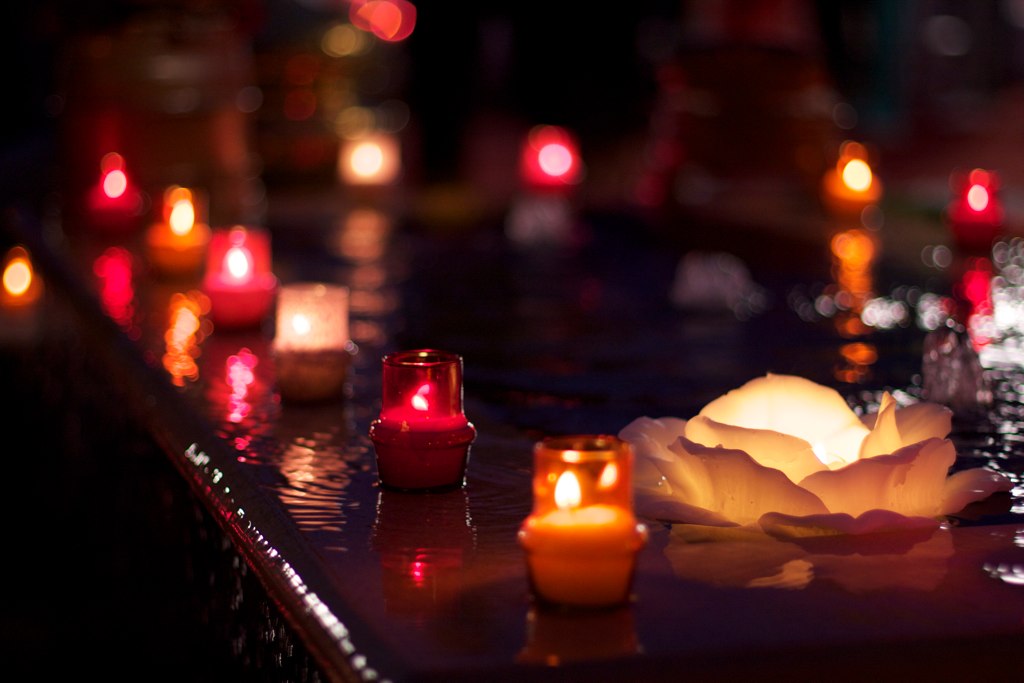 After completing this practice, a powerful next step is to feel into an action you can take, given your new perspective on your part in the whole. It’s OK if it’s small; approach this as a gesture to acknowledge the inner shift in consciousness. For example, when I was in India I bought a beautiful reusable grocery bag to signify my new commitment to reducing my waste. I still have it, and every time I use it it reminds me of the choice.
After completing this practice, a powerful next step is to feel into an action you can take, given your new perspective on your part in the whole. It’s OK if it’s small; approach this as a gesture to acknowledge the inner shift in consciousness. For example, when I was in India I bought a beautiful reusable grocery bag to signify my new commitment to reducing my waste. I still have it, and every time I use it it reminds me of the choice.
As I have done this practice, I have continued to turn my attention toward my own waste and feel—feel what is under the guilt that comes up when I take out the trash, because guilt is just a cover. Under the guilt I find my love for the Earth and my desire to be in integrity with that love. So I stick with my choice to turn my attention toward this.
By making that choice, I’ve also made small, incremental changes in my behavior. For example, I have almost entirely boycotted coffee shops that insist on only using “disposable” cups. I do my best to remember my reusable grocery and produce bags when I go shopping. I’ve replaced single-use household items with refillable ones. I have a reusable menstrual cup. I have started to buy clothing that is made more sustainably and will last longer. I avoid bottled water. I could do more, but these things are real and they matter—at least at the level of my own integrity. And in the process I keep doing my best to remain available to what is—both within myself and within this beautiful and complicated world.
Photos: "Reeditando" by Lucia Puertas on Flickr (cc), "Poolside Candles" by Rob Taylor on Flickr (cc)

